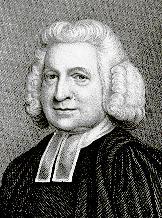- |
User Links
Lamb Of God For Sinners Slain
Lamb of God, for sinners slain, To Thee I feebly pray
Author: Charles Wesley (1742)Tune: PENITENCE (Oakley)
Published in 47 hymnals
Representative Text
1 Lamb of God for sinners slain,
To Thee I humbly pray:
Heal me of my grief and pain,
Oh, take my sins away.
From this bondage, Lord, release;
No longer let me be opprest;
Jesus, Master, seal my peace,
And take me to Thy breast!
2 Wilt Thou cast a sinner out
Who humbly comes to Thee?
No, my God, I cannot doubt:
Thy mercy is for me:
Let me then obtain the grace,
And be of paradise possest:
Jesus, Master, seal my peace,
And take me to Thy breast!
3 Worldly good I do not want,
Be that to others given;
Only for Thy love I pant,
My all in earth or heaven;
This the crown I fain would seize,
The good wherewith I would be blest;
Jesus, Master, seal my peace,
And take me to Thy breast!
4 This delight I fain would prove,
And then resign my breath:
Join the happy few whose love
Was mightier than death.
Let it not my Lord displease,
That I would die to be His guest:
Jesus, Master, seal my peace,
And take me to Thy breast!
Source: Book of Worship (Rev. ed.) #303
Author: Charles Wesley
 Charles Wesley, M.A. was the great hymn-writer of the Wesley family, perhaps, taking quantity and quality into consideration, the great hymn-writer of all ages. Charles Wesley was the youngest son and 18th child of Samuel and Susanna Wesley, and was born at Epworth Rectory, Dec. 18, 1707. In 1716 he went to Westminster School, being provided with a home and board by his elder brother Samuel, then usher at the school, until 1721, when he was elected King's Scholar, and as such received his board and education free. In 1726 Charles Wesley was elected to a Westminster studentship at Christ Church, Oxford, where he took his degree in 1729, and became a college tutor. In the early part of the same year his religious impressions were much deepene… Go to person page >
Charles Wesley, M.A. was the great hymn-writer of the Wesley family, perhaps, taking quantity and quality into consideration, the great hymn-writer of all ages. Charles Wesley was the youngest son and 18th child of Samuel and Susanna Wesley, and was born at Epworth Rectory, Dec. 18, 1707. In 1716 he went to Westminster School, being provided with a home and board by his elder brother Samuel, then usher at the school, until 1721, when he was elected King's Scholar, and as such received his board and education free. In 1726 Charles Wesley was elected to a Westminster studentship at Christ Church, Oxford, where he took his degree in 1729, and became a college tutor. In the early part of the same year his religious impressions were much deepene… Go to person page >Text Information
| First Line: | Lamb of God, for sinners slain, To Thee I feebly pray |
| Title: | Lamb Of God For Sinners Slain |
| Author: | Charles Wesley (1742) |
| Language: | English |
| Copyright: | Public Domain |
Notes
Lamb of God for sinners slain, To Thee I feebly pray. C. Wesley. [Looking unto Jesus.] Appeared in Hymns & Sacred Poems, 1742, p. 49, in 6 stanzas of 8 lines. (Poetical Works, 1868-72, vol. ii. p. 98). In 1776, stanzas i.-iii, and vi. were included in Toplady's Psalms & Hymns, No. 279, and thus came into use in the Church of England. J. Wesley's cento for the Wesleyan Hymn Book, 1780, No. 161, was composed of stanzas i., iii., v., vi. This is retained in the edition of 1875, and is in extensive use.
--John Julian, Dictionary of Hymnology (1907)


 My Starred Hymns
My Starred Hymns

